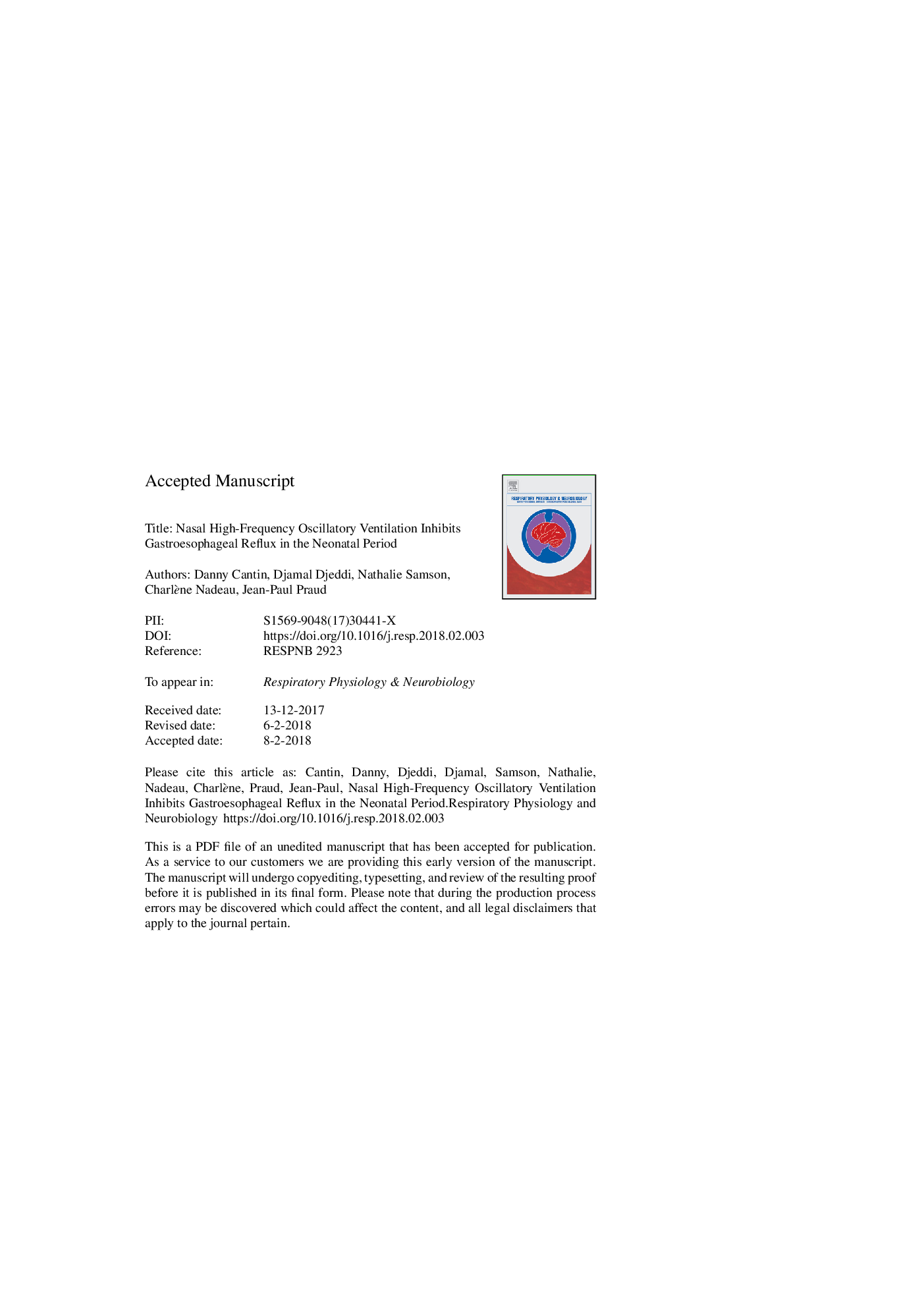| Article ID | Journal | Published Year | Pages | File Type |
|---|---|---|---|---|
| 8650807 | Respiratory Physiology & Neurobiology | 2018 | 25 Pages |
Abstract
Nasal high-frequency oscillatory ventilation (nHFOV) in neonates is increasingly considered due to enhanced alveolar ventilation, absence of patient-ventilator asynchrony and lessened ventilator-induced lung injury. Although any type of non-invasive respiratory support can lead to gastric distension via esophageal air passage and thus promote gastroesophageal refluxes (GERs), we have shown that nasal continuous positive airway pressure (CPAP; 6 cmH2O) and intermittent positive pressure ventilation (15/4 cmH2O) conversely inhibit GERs in lambs. The current objective was to test the hypothesis that nHFOV also inhibits GERs compared to spontaneous ventilation without respiratory support. Eight lambs underwent five hours of polysomnographic and esophageal multichannel intraluminal impedance pHmetry recordings to assess GERs and air passage into the esophagus, with and without nHFOV (mean airway pressureâ¯=â¯8 cmH2O, oscillation frequencyâ¯=â¯8â¯Hz, amplitudeâ¯ââ¯20 cmH2O and I:Eâ¯=â¯1:2). Results revealed that GERs were decreased with nHFOV (pâ¯=â¯.03), despite an increase in gas-containing swallows (pâ¯=â¯.01). In conclusion, similarly to nasal CPAP and intermittent positive pressure ventilation, nHFOV inhibits GERs in newborn lambs.
Related Topics
Life Sciences
Biochemistry, Genetics and Molecular Biology
Physiology
Authors
Danny Cantin, Djamal Djeddi, Nathalie Samson, Charlène Nadeau, Jean-Paul Praud,
